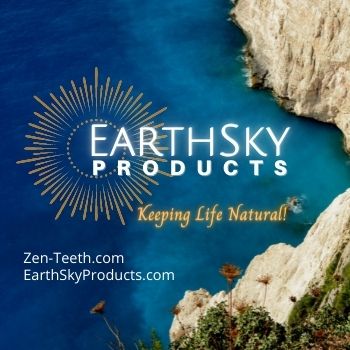“Mushrooms are here to help us — they’re a gift,” college student Katy Ayers said. “They’re our biggest ally for helping the environment.”
April 18, 2020, 6:17 AM PDTBy Sarah Kuta
Catch a glimpse of Katy Ayers paddling her canoe on a Nebraska lake this summer and you might do a double take.
At first glance, her 8-foot vessel looks much like any other canoe — same oblong shape, same pointed ends, same ability to float on water.
But upon closer inspection, it’s clearly anything but ordinary: Ayers’ canoe is made out of mushrooms.
More specifically, her boat is made from mycelium, the dense, fibrous roots of the mushroom that typically live beneath the soil. Ayers, 28, a student at Central Community College in Columbus, Nebraska, even gave her creation a fitting name: “Myconoe.”
Though Ayers has taken the canoe out for several quasi-recreational excursions — and plans to do so again as soon as the weather warms up in the rural part of Nebraska where she lives — her real goal with the eye-catching project is to raise broader awareness about mushrooms. She is part of a growing movement of mushroom advocates, people who believe these squishy, sometimes edible fungi can help solve some of our most pressing environmental problems.

In addition to their ability to break down harmful pollutants and chemicals, Ayers pointed out that mushrooms can be used for everything from household insulation to furniture to packaging, replacing plastics, Styrofoam and other materials that are hard to recycle and harmful to the environment.
“Mushrooms are here to help us — they’re a gift,” Ayers said. “There’s so much we can do with them beyond just food; it’s so limitless. They’re our biggest ally for helping the environment.”
Mushrooms aren’t exactly mainstream, though citizen scientists like Ayers and some private companies hope to someday change that. The New York-based biotech company Ecovative Design, for instance, has made headlines for its mushroom-based packaging material, which has been deployed by companies such as Ikea and Dell. Mushrooms are being used at the local level to help clean up toxic debris and contaminated soil — a process known as mycoremediation — but so far have not been adopted on a larger scale.
Ayers never paid much attention to mushrooms until she enrolled in 2018 at the college in Columbus, a small city with around 23,000 residents. During her first semester, an English instructor challenged students to find and study a potential solution to climate change.
During her research, Ayers came across a 2013 documentary called “Super Fungi,” which made the case for mushrooms as an environmental ally and highlighted some of their innovative uses.
Ayers was sold on the power of mushrooms instantly. Having learned that mycelium is buoyant and waterproof, she decided to try using it to create a boat.
“I always have very big ideas,” she said. “So I see something and it’s small and I just want to make it bigger and better. Since I’m from Nebraska, I love to fish. I’ve always wanted a boat. Why not just grow it?”
With a mini-grant from the college, Ayers got to work. She reached out to a mushroom company in nearby Grand Island for help, sharing her idea with owner Ash Gordon. He agreed to help immediately and offered her a summer internship so she could learn the ins and outs of fungi.
During the day, Ayers worked alongside Gordon at Nebraska Mushroom, doing lab work, creating spawn and harvesting, packaging and processing mushrooms.
After finishing their work for the day, the two turned their attention to the canoe project. They first built a wooden skeleton and a hammock-like structure to suspend the boat-shaped form in the air.

They next sandwiched the boat’s skeleton with mushroom spawn and let nature take over.
For two weeks, the fledgling canoe hung inside a special growing room in Gordon’s facility, where temperatures ranged between 80 and 90 degrees and the humidity hovered between 90 to 100 percent. The last step in the process was to let the 100-pound boat dry in the Nebraska sun.
Sarah Kuta
Sarah Kuta is a freelance journalist based in the Denver area.






